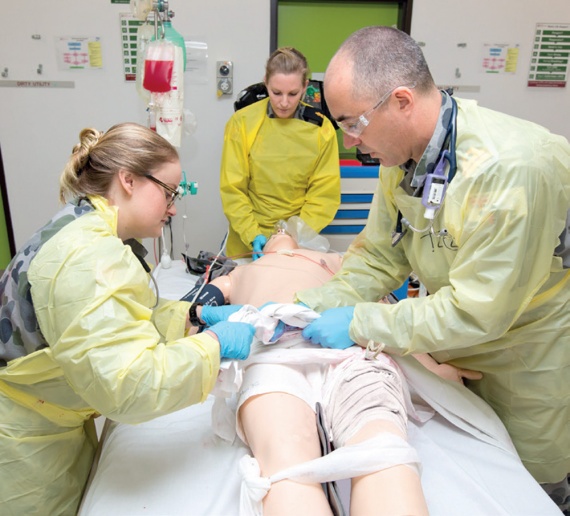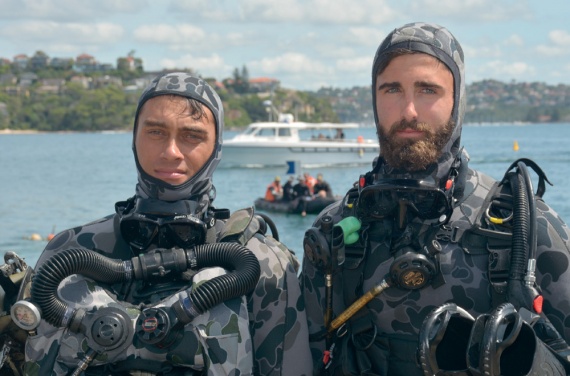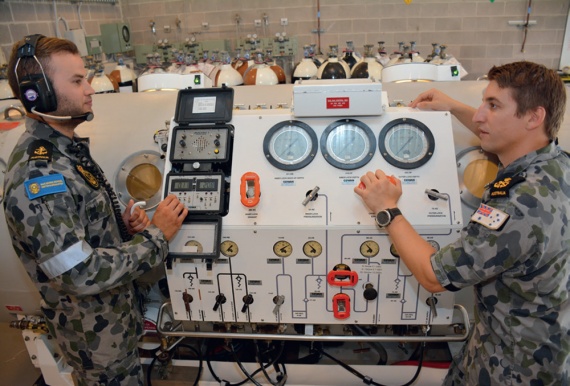HMAS Penguin
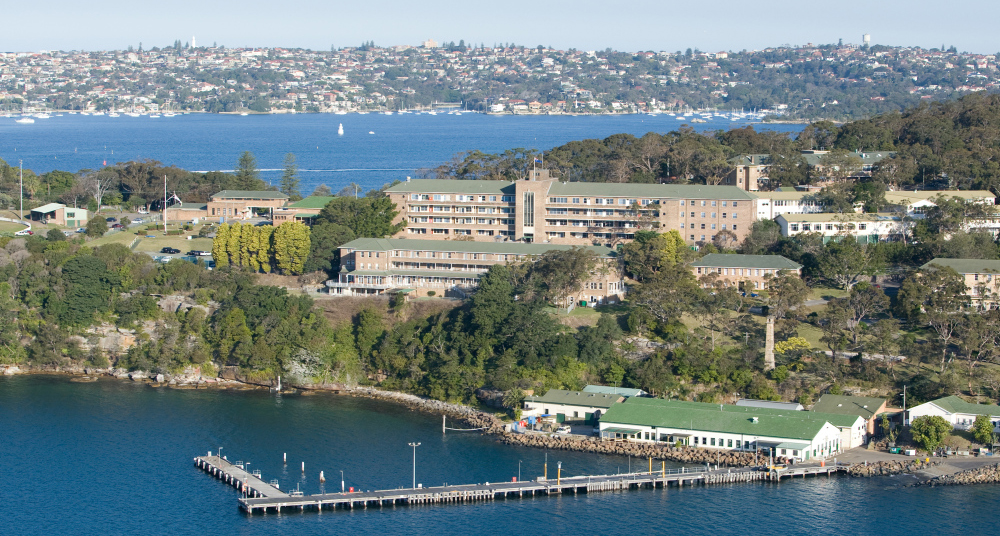
Commanding Officer: Commander Michael Nipperess
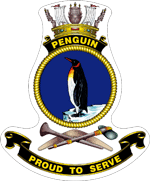
2017 marked the 75th Anniversary of the commissioning of HMAS Penguin in 1942.
Situated in the suburb of Balmoral on Middle Head in Sydney Harbour, HMAS Penguin is surrounded by beaches and parklands and is within 30 minutes drive of the city centre.
HMAS Penguin also has an Annex situated on Pittwater on the Northern Beaches of Sydney.
Penguin is also close to many sights and sounds of Sydney, including Balmoral and Manly beaches and Taronga Zoo.
HMAS Penguin is part of the Navy’s Fleet Command and was commissioned on 14 July 1942. Its primary role today is to provide trained personnel to the Fleet and is the home of the ADF Diving School (ADFDS), the RAN Hydrographic School and the RAN Medical School.
Penguin is also home to a number of Resident Units including:
- Maritime Operational Health Unit (MOHU);
- Submarine and Underwater Medicine Unit (SUMU);
- Recompression Chamber Facility (RCCF),
- 1 Commando Company (1Coy);
- ADF Centre for Mental Health; and
- Penguin Health Centre.
As the only remaining military presence on Middle Head, Penguin is fortunate to enjoy the strong support of the local community. Penguin is part of the Mosman local government area and has fostered close ties with the local community for many years. Penguin supports a number of regular community and other charity events, including;
- Balmoral Swim for Cancer;
- Balmoral Burn Run in support of the Humpty Dumpty Foundation;
- Cancer Council Relay for Life at Manly;
- Mosman Festival;
- Sir David Martin Foundation; and
- White Ribbon Day activities.
History
Penguin's motto is ‘Proud to Serve'. It is very apt and befitting a ship that has served Australia - in different guises - for longer than the Royal Australian Navy has existed. Indeed, Penguin's have served Australia in an almost unbroken line since 1877; a tradition of service stretching for more than 135 years! The first Penguin was a composite sloop that first commissioned in the Royal Navy in 1877 and served on the Australia Station. After a brief period of service on the East Indies Station which included involvement in the Blockade of Zanzibar, Penguin was outfitted for surveying operations. From 1889 to 1907 she conducted hydrographic surveys in Pacific, Chinese and Australian waters - including exhaustive surveys of the Great Barrier Reef - before being dismasted, roofed over and reconfigured for service as a depot ship in Sydney. In this role she was transferred to the RAN in 1913 and was berthed at Garden Island, remaining in commission until 1 January 1923.
Penguin was subsequently sold and converted into a floating crane. In this guise she continued to work in Sydney Harbour for a further 35 years before burning to the waterline in Kerosene Bay on 13 December 1960.
Penguin (II) was the former light cruiser HMAS Encounter, part of the Australian Fleet that entered Sydney Harbour for the first time on 4 October 1913. Encounter was renamed Penguin (II) on 1 January 1923 and assumed responsibilities as the Navy's depot and accommodation ship at Garden Island. She was paid off for disposal on 15 October 1929; eventually being stripped and towed out to sea to be sunk off Sydney on 14 September 1932.
Penguin (III) began service as HMAS Platypus, a Submarine and Destroyer Tender and Fleet Repair Ship. Platypus commissioned as Penguin (III) on 16 August 1929 and became the new depot and accommodation ship at Garden Island. She continued in this role until 26 February 1941 when, recommissioned HMAS Platypus, she resumed sea service as a Training Ship.
In 1939, Penguin (Garden Island) was the Navy's main base in Sydney. At the outbreak of war, additional support bases were established in Newcastle, Brisbane and Darwin and each of these was also named Penguin.
In 1941, construction of the existing establishment at Balmoral began. The depot, designed to provide sleeping accommodation for 700 men with necessary administration, support offices and recreational facilities also included the Balmoral Naval Hospital. It was commissioned as Penguin (II) on 14 July 1942 and, when Garden Island was renamed HMAS Kuttabul on 1 January 1943 - in memory of those killed on the ferry Kuttabul in the Japanese midget submarine attack on Sydney Harbour - Penguin (II) became simply Penguin.
Before the Balmoral site was transferred to the Commonwealth Government for Defence use it had been home to the Mosman Golf Club. The former clubhouse remains across the road from the main entrance to Penguin. Before that the site housed the Mosman sewerage works; the swimming pool and the old sandstone tower remain as reminders of this period.
The current Penguin has a proud history and tradition and has filled various important roles reflecting the recurring themes of operations, diving, health care and training:
- On commissioning Penguin was the home of the Balmoral Naval Hospital and served as a convalescence centre and as base for the Fairmile B Motor Launches that patrolled Sydney Harbour. After the war, it became the main demobilization base for the Navy. The Balmoral Naval Hospital closed down in October 2006 and Penguin now provides a small Medical Centre for RAN personnel.
- Between 1945-1974 Penguin was home to the RAN Seamanship School. HMAS Countersink, a damage control simulator - built from scrap recovered from the battle-damaged HMAS Australia and HMAS Hobart - was constructed on site and until well into the 1980s, as part of the Nuclear, Biological and Chemical Defence School, it continued to train officers and sailors in the art of battle damage repair.
- Between 1948-1967 Penguin was home to the Royal Navy's Fourth Submarine Squadron before the First Australian Submarine Squadron was formed in 1968 and home ported at HMAS Platypus, Neutral Bay.
- During the period of National Service, 1951-1954, Penguin housed Navy's National Service Recruit School.
- In the early 1960s, the RAN Hydrographic School was established at Penguin. With the departure of the Submarine Squadron, the RAN Diving School and the Submarine and Underwater Medicine Unit took up residence at the site.
- In mid-1968, Clearance Diving Team One, which was formed at HMAS Rushcutter in 1966, was transferred to Penguin.
- From 1979-2000, the RAN Staff College was based at Penguin before moving to Canberra at the end of 2000 to collocate with the other Service Staff Colleges.
- In 1985 a Recompression Chamber Facility was opened.
- In the 1990s, the Security and Naval Police Coxswains School operated out of Penguin before relocating to Holsworthy in 2000 as part of a new Military Police Training Centre.
- From 1999-2009, the State Headquarters of the Australian Navy Cadets was situated at Penguin.
- Other occasional residents at Penguin have included the RAN Band, Clearance Diving Team One and the Navy Sailing Centre.


